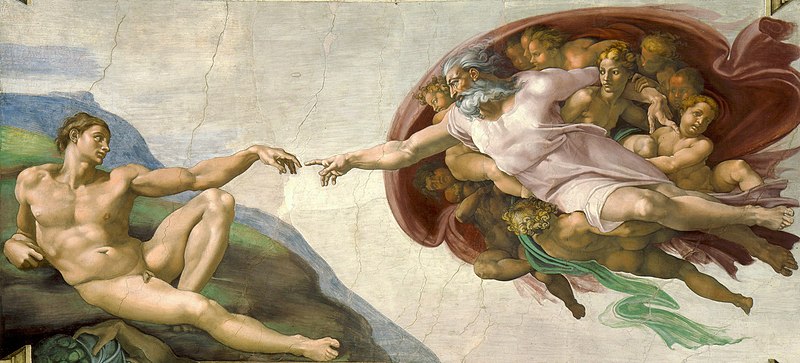The painting shows the ruins of Gaza morphing into the torso of a Palestinian woman. This woman – Gaza – is rising to gaze into an expectant sky, body in motion as though she has just picked herself up off the ground. The strength, resilience, and determination communicated by this work are indicative of Abu Shtayyah’s oeuvre as a whole.
Imad Abu Shtayyah is a Palestinian artist born in 1965, in the Jerash refugee camp near Amman, Jordan. Raised in poverty by parents who had fled Palestine during the atrocities of 1948, Abu Shtayyah showed interest in art at an early age, using it as a means to cope with the difficulties of the life he witnessed.
Abu Shtayyah has no formal academic training in the arts. Working in two-dimensional media, he first experimented with the traditional materials that were available to him, such as oil painting, watercolor, and pastel. Later, he incorporated digital illustration into his repertoire. As a painter, his enthusiasm for the works of Salvador Dali and Francisco Goya is apparent in his romantic use of symbolism and saturated color, and in the surreal fluidity, he creates between humans, animals, and landscapes.
Abu Shtayya frequently personifies Palestine as a woman wearing a long traditional dress known as the thobe, embellished with the intricate embroidery that has come to represent pride in Palestinian heritage. Though he depicts his figures with meticulous realism. In keeping with Palestinian nationalist ideology, the artist depicts women as the “keepers of culture,” responsible for raising subsequent generations with respect for their heritage.
Imad Abu Shtayyah still resides and works in Amman. He has held exhibitions in Ramallah, New York, Sharjah, Cairo, and Gaza, and much of his work is exhibited on websites including Fine Art America, The Palestine Poster Project Archives, and the artist’s personal Facebook account. In 2018, one of his paintings was chosen to be represented on a stamp in Uruguay. More on Imad Abu Shtayyah
Please visit my other blogs: Art Collector, Mythology, Marine Art, Portrait of a Lady, The Orientalist, Art of the Nude and The Canals of Venice, Middle East Artists, 365 Saints, 365 Days, and Biblical Icons, also visit my Boards on Pinterest
Images are copyright of their respective owners, assignees or others.
Some Images may be subject to copyright
I don't own any of these images - credit is always given when due unless
it is unknown to me. if I post your images without your permission, please tell
me.
I do not sell art, art prints, framed posters or reproductions. Ads are
shown only to compensate the hosting expenses.
If you enjoyed this post, please share with friends and family.
Thank you for visiting my blog and also for liking its posts and pages.
Please note that the content of this post primarily consists of articles
available from Wikipedia or other free sources online.

.jpg)











.jpg)
